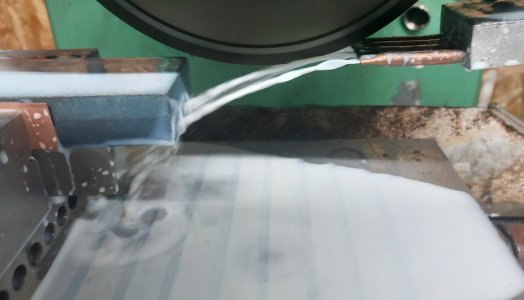I understand the cleaning aspect and having two is fine. But “you don’t need three to keep them in good condition” assumes neither stone wears with use. I find that somewhat unlikely. If there is any wear in one of the stones, using one other stone will not correct it.
Now maybe your point is that the stones cannot abrade each other, they can only abrade a protrusion. Maybe so, and if so, then refreshing on the surface grinder is the only way to correct wear.
These don't work like regular stones in this aspect. They really don't "wear" tangibly. They do wear of course, but they don't wear holes like a "normal" stone. Provided that is, you don't use them like a "normal" stone. If you're sharpening knives with them, or rounding off corners, of course you're gonna wear them funny, but you're not going to do that much, because you'd bee there all day long. Because in normal use there is some significant portion of the stone's surface laid on something very flat, they ONLY pick on the one high point. (Or I guess if you're scraping maybe they'd lay on a bunch.....). But if they're laid flat, working on specific damage points, any wear that did occur would be local, not global, which won't affect their global flatness, nor will it affect their function.
When you rub the two stones together (which is VERY often), they can't and don't cut each other. They dig out/remove/shave off any metal particles that have become embedded.
I don't pretend to be an expert here, but honestly I can't see any tangible shape being worn into these stones before the flattened abrasive particles at the surface become "dull", and it just won't cut any more. I believe this is why you don't see sets of three for sale. Because I believe that they'll need replacement or regrinding for sharpness long before they need it for taking on any quantifiable shape at any global scale..



